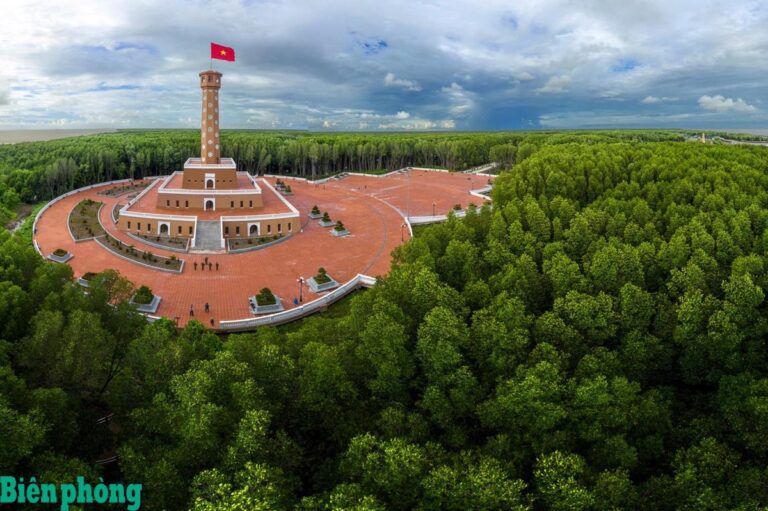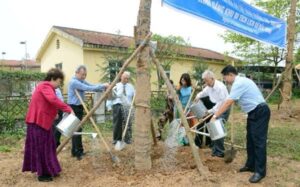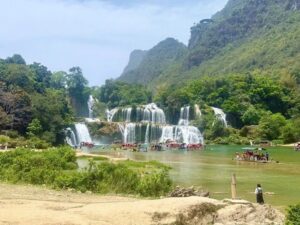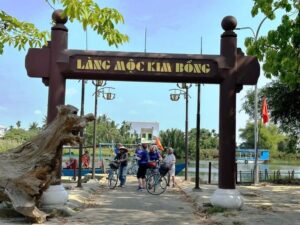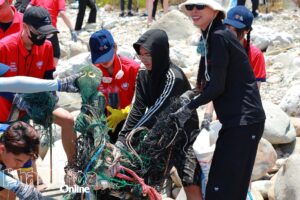Viet Nam would not sacrifice the environment for immediate economic benefit, Prime Minister Nguyen Tan Dung reiterated before the National Assembly last week.
The Government was determined to deal decisively with any breach of the environmental law, but any socio-economic losses as part of the punishment should be limited, he said.
Ensuring that economic benefit does not damage the environment creates a dilemma for both governments and society.
Can economic prosperity be achieved in harmony with the environment?
The question has been put at a seminar of Association of Southeast Asian Nations (ASEAN) journalists and Japanese industrialists organized by the Keizai Koho Centre and it is applicable to both developed and developing countries.
With most economies faced with recession, people are worried about falling incomes, financial instability and unemployment; it means that protection of the environmental could be overlooked or sacrificed.
Money will now be poured into infrastructure construction, major public projects and production to generate more jobs, more income and eventually more economic growth.
But we can no longer afford any wasteful use of our resources.
Investment to protect the environment is popularly thought of as a non-wealth generating extra cost that is expendable and necessary only when economic targets have been met.
This time of economic turmoil provides the chance to shrug off this mentality.
Green production and services have the potential to become a crucial industry that provides not only health and security but also higher GDP and jobs.
People are now afraid of an insecure future, but money invested in the environment will foster security.
The latest International Labour Organization – United Nations Employment Programme "Green Jobs" report forecasts that millions of "cleaner" careers are possible by 2030.
Millions of jobs
As many as 20 million new jobs could be created in the alternative-energy industries alone.
"Green jobs" are defined as employment that contributes substantially to preserving or restoring the environment. In the United States, green jobs are expected to number about 40 million by 2030.
A 2007 Deutsche Asset Management report identified trends that may open long-term investment in the environment.
The value of low-carbon energy markets is estimated to grow to USD 500 billion by 2050;
The demand for projects generating greenhouse-gas-emission credits is projected to rise to USD 100 billion by 2030;
The global fuel cell and hydrogen market is likely to hit USD 15 billion by 2015; and world-wide investment in clean energy is expected total USD 100 billion next year.
Economic turmoil has provided an opportunity to reassess our needs and re-adjust our activities towards a more sustainable, efficient and human-and-environment-friendly development.
We should now become more selective than ever about our plans and projects.
We should endorse only those that ensure sustainable development and spurn any that will eventually cost huge amounts of money to rectify.
We should incorporate environmental protection into the massive financial packages world governments are injecting into the financial system to stimulate economies.
Environment friendly technologies will help protect, or recycle our resources and save our money.
The ASEAN journalists, who visited Japan, saw that economic prosperity can co-exist in harmony with the environment.
The water quality of Tokyo’s rivers has been considerably improved through the control of factory waste and a better sewage system after the heavy pollution that followed the high economic growth of the late 1960s early 1970s.
Fish and aquatic life have permanently returned.
The city’s air has been cleaned through the use of non-polluting boilers and higher quality fuel. Tokyo’s Metropolitan government plans to create 1,000 ha of new greenery by 2016.
The change has been wrought through the political will of the local government with support from business and residents.
The effort has not been trouble free.
JFE Steel, which has invested in the recycling of plastic bottles, has difficulty with collection and Panasonic, which is committed to recycling its electronics products, admits people still leave its appliances at the dump.
Developing nations
Developers of sophisticated technologies that conserve energy and protect the environment now need to locate in developing countries so that their products are more affordable in these markets.
Vietnam’s major challenge is to improve people’s awareness of the need to protect the environment and enhance the Government’s capacity to manage and enforce environmental law.
Violators like Vedan will not install waste-treatment facilities if they know they can continue to profit while punishment is delayed.
Wave power
Money is also needed to support Vietnamese innovation. An example is the engineer who floated his idea for electricity generation through the use of wave power on the Internet.
Good practice should be shown to attract economic reward so that it will be widely adopted.
Farmers who overuse pesticides should be made to understand that this will both rob their produce of a place in the high-end market and lower their income.
Environmental-friendly technologies should be supported through preferential policies.
Vietnam has asserted the will to protect the environment and is ready to invest its limited resources in the effort.
Success will become more likely if it can now mobilize international co-operation and support.



